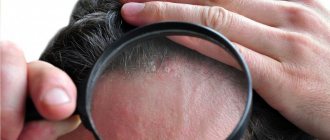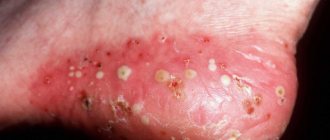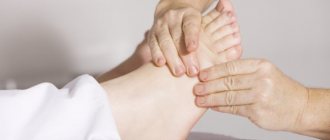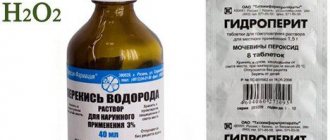New possibilities for complex therapy of psoriasis
00:00
Oksana Mikhailovna Drapkina , executive director of the Internet Session, secretary of the interdepartmental council on therapy of the Russian Academy of Medical Sciences:
— Let’s move on to a new, very exciting section – dermatology. This is actually our first time in an online session. This is already the 27th Internet Session. Many dermatologists are now looking at the screens with interest, because the lecture will be given by Professor Yuri Nikolaevich Perlamutrov. It is called “New opportunities for complex therapy of psoriasis.”
Perlamutrov Yuri Nikolaevich , Doctor of Medical Sciences, Professor:
— Good afternoon, dear colleagues.
I am glad to have the opportunity to meet with such an impressive and professional audience, which is already immersed in various problems of medical science. But in conclusion, I think you will be interested in learning something new in terms of the treatment of such a common pathology in our specialty as psoriasis.
The current relevance of the disease is a change in the structure of dermatosis: an increase in disabling forms that are resistant to therapy, and the emergence of severe forms of psoriasis in people of young working age.
Very interesting statistics. Please note that 2-3% of the total population of planet Earth suffer from psoriasis. This is 120 - 180 million people. It is interesting that it is in the countries of Denmark (Scandinavian countries) that psoriasis is more common than in Kuwait. This can be explained by one thing - where the climate is more continental, sharply continental, low temperatures prevail, the incidence of psoriasis increases.
Epidemiology. Psoriasis affects men and women with equal frequency. Depending on the age at which this disease began, there are two types of the disease. The first type is the age from 16 to 25 years (the onset of the disease at this age). Patients who follow hereditary factors. It is very important. The rashes are common. In a very large percentage there is joint damage.
The second type, as we sometimes say, is the benign type. This is, of course, not a medical term. In this case it is not entirely correct. But it characterizes the fact that these patients have a favorable course of the disease and less resistance to therapy.
Psoriasis is a pressing social problem. Each dermatosis is accompanied by cosmetic defects. Such a common dermatosis as psoriasis naturally produces a larger volume of these defects. The psychological sphere of patients of this nosology suffers greatly.
The chronic course of psoriasis and resistance to common treatment methods lead to enormous financial costs for government and insurance medical organizations.
03:23
Despite the fact that this disease has already been known for over 2000 years, unfortunately, there is no effective treatment method that would once and for all rid the population of such a serious pathology (as I already said, entailing cosmetic defects and affecting the psychological status of our patients). , No.
I continue with the social aspects. Certain studies have been carried out. Please note that 63% of respondents do not want to enter into financial transactions with people who have psoriasis. People have a particularly negative perception and negative attitude when they communicate towards those patients with psoriasis who have lesions on the scalp.
In this regard, problems arise in people's lives. If you think that this is, first of all, a swimming pool and a sports club - no. In first place are places where people communicate. These are restaurants, clothing stores, only then come massage parlors, beauty club services, and so on.
The consequence of all this is a psychopathological disorder that occurs in our patients. 53% are in a mixed state, when the same patient has several disorders: neurotic, affective, and cognitive. The saddest thing is personality and desire disorders.
Thus, when we talk about the quality of life of patients with psoriasis, with that colossal sample (1150 patients who conducted the study), 35% of respondents have a pronounced decrease in quality of life (that is, more than a third of our patients). You understand how important this is as a social factor.
Psoriasis. On the one hand, as we have already talked to you, hereditary predisposition is a key etiological factor in the development of psoriasis. Triggers (what were previously called risk factors) are immune, neurogenic, endocrine, infectious, toxic and metabolic changes.
05:51
Pathogenetic aspects of psoriasis. Today, there are several main points, both in foreign and domestic dermatology, that determine the pathogenesis of this disease:
1. Pathological activity of T-lymphocytes.
2. Impaired functioning of the immune system (overproduction of interleukins 1? 2, 6, 7, 8, interferon factor gamma and tumor necrosis factor?).
3. Impaired microcirculation (increased levels of VEGF or vascular endothelial growth factor and decreased sVEGF, that is, vascular endothelial growth factor receptors).
4. Local hypoxia.
5. Impaired differentiation of keratinocytes.
6. Hyperproliferation of epidermal cells.
Thus, any doctor, even far from our specialty, understands perfectly well that the main effects with the help of medications should be aimed, if possible, at all these factors, or at least at most of them.
A very important factor is the comorbid conditions of psoriasis. The cellular metabolism of kertinocytes and their pathological proliferation (I draw attention to this point - proliferation) are the result of structural and organ disorders. First of all, metabolic abnormalities; diseases of the cardiovascular system; diseases of the gastrointestinal tract, hepato-biliary system and mental disorders.
Psoriasis and metabolic syndrome. I have no doubt that the distinguished lecturers who have addressed me today have mentioned this term. I show once again that this is a very important point. Of course, there are different specialties in medicine. There is gastroenterology, cardiology, therapy, dermatology. But there is one patient with all the problems. A deviation in one system entails a change in the functioning of another system.
Especially when we talk about skin. The skin, which on the one hand is the most observable organ. On the other hand, it is an organ that instantly reacts to some deviations in the functions of the human body.
Thus, speaking about psoriasis, such a common pathology, one of the dominant pathologies in our specialty, naturally, we must dwell on the question “Psoriasis and metabolic syndrome.”
08:21
Back in 1995, scientists noted a direct correlation between obesity and the severity of psoriasis. It has been established that in patients with psoriasis, the average body mass index is higher than in the general population.
(Slide show).
These graphs show a very large sample, control over 1000 people, psoriasis about 600 people. There are changes in type 2 diabetes (specific gravity in psoriasis) and specific gravity of hyperlipidemia also in dermatological pathology.
Coronary heart disease, arterial hypertension. Nowadays there are a lot of works appearing. Dissertation works. In particular, a dissertation was defended at our department on a very important point - hypertension in psoriasis. Here we refer to foreign authors because they have a larger number of observed patients. But the same studies are being conducted in Russia.
Psoriasis and pathology of the gastrointestinal tract and hepatobiliary system. In patients with psoriasis, a combined pathology is determined in 75% of cases. Fatty liver, and biliary dyskinesia, chronic hepatitis, chronic pancreatitis, cholecystitis, gastritis, duodenal ulcer.
Thus, we must also emphasize that cholecystobiliary insufficiency occurs in the majority of patients with psoriatic arthritis. A very important point, I would like to draw your attention to it, is that these are studies conducted by Russian authors.
10:23
Psoriasis-psychiatric disorders. We talked about metabolic syndrome. We talked about the pathology of the gastrointestinal tract. Now we touch on psoriasis and mental disorders.
Please note, 64% - dysthymia, mild recurrent depressive disorder - 23%. Recurrent depressive disorder of moderate severity in 13%. More than 40% of patients with psoriasis have disorders in the sexual sphere. Moreover, it was in these patients that joint damage was more often recorded. The same psoriatic arthritis that leads to rapid disability of our patients.
Psoriatic arthritis. Currently, psoriatic arthritis is considered as an independent inflammatory disease of the joints associated with skin psoriasis, and seronegative for rheumatoid factor. It is registered in 10–20% of patients with psoriasis, that is, in almost every fifth patient with psoriasis.
If you remember the figure that I gave at the very beginning of my speech (120 - 180 million people suffer from psoriasis in the world), then you will agree that 20% of 180 million is a significant figure. 20% have psoriatic arthritis. A pronounced systemic manifestation is often observed, namely, high and prolonged fever, lymphadenopathy, arthritis, carditis, hepatopathy, diffuse glomerulonephritis, and renal amyloidosis.
A very interesting point that I draw the attention of my colleagues is that joint damage is more common in patients with psoriatic disorders localized to the scalp and damage to the nail plates. On the one hand, it would seem that there are only nails and hair (this can also be the case), but the lesion may be generally limited only to the scalp. At the same time, the patient faces such a severe disabling pathology as joint damage.
Based on all the information base that I presented to you (the many triggers that lead to the formation of this pathology, the pathogenesis of this disease, the disorders that we encounter, which are present in a patient with psoriasis), naturally, it was interesting to find some new therapeutic approaches to treating such a complex multifactorial pathology.
We set ourselves the task of determining the effectiveness and feasibility of including the drug Heptral (Ademethionine) in the complex therapy of patients with psoriatic arthritis.
13:15
The study material included 45 patients, of whom there were 9 women and 36 men. All these patients were in the hospital-progressive stage. There was not a single patient in a regressing stage of the disease. The duration of the disease ranges from several months to 23 years. Most often from 2 to 15 years. The anamnesis was quite significant.
I would like to draw your attention to one more very important point. I deliberately left it at the end of my acquaintance with this image. This is what patients with psoriatic arthritis with laboratory signs of liver damage and depressive disorders. It was precisely these patients that interested us.
Localization of articular syndrome. Classic: inflammation of the interphalangeal joints of the feet and hands. Naturally, there were fewer large joints in percentage. Sedentary joints of the iliosacral joint - only more than 4%. X-ray examination revealed both early signs of inflammatory phenomena and late ones, characteristic of psoriatic arthritis.
All patients (45 people) were randomly divided into 2 groups. One received traditional therapy (that is, nonspecific anti-inflammatory drugs and other known drugs). The second group (30 people) - Heptral was added to this standard therapy, 2 tablets 2 times a day for three weeks.
What is Heptral? This is a biologically active compound, similar (very important point) to intracellular ademetionine. On the one hand, this is a drug that is produced under pharmaceutical production conditions. On the other hand, it is similar to a compound found in our body.
The equivalence of Heptral to endogenous ademetionine determines the high level of effectiveness of the drug and the rapid achievement of a therapeutic effect due to its complete inclusion in biochemical reactions. An extremely important point is that Heptral, on the one hand, is a hepatoprotector with antidepressant, detoxifying, regenerating and neuroprotective effects. This is precisely what attracted our attention, based on the information that I introduced you to in the debut of my speech.
16:00
We took materials from PASI, naturally. We took a visual analogue scale, the level of depression and an assessment of the results of a biochemical blood test.
Research results. PASI before and after treatment. I think the numbers speak for themselves. In the second group (the same one where 30 patients received Heptral), the effect was 2.5 times better than in the standard therapy group.
The visual analogue scale showed us that after treatment we got a fantastic zero both at rest and in motion. These achievements are very significant. Naturally, in the group (the first) where there was simply standard therapy without the use of the drug Heptral.
Research on the Hamilton scale. Indicators of depression (group 2). After two weeks we got, perhaps, not so significant differences. A month later, it almost doubled (maybe, I dare say in a simplified way - less, naturally, than doubled, but the numbers vary significantly).
Biochemical studies gave us very good numbers in the second group (where Heptral was used). A dynamic that really inspired us. Whenever we start treating our patients...
I will not list other drugs for you. If we use biological agents, cytostatics, steroids and other very powerful drugs, then the biochemical sphere suffers along with the clinical effect. In this case, we had a clinical effect, but had very good blood biochemistry indicators.
Thus, all the research we conducted allowed us to draw a number of conclusions. Firstly, that this drug in the complex therapy of psoriatic arthritis helped reduce the PASI index by more than 80%. It was accompanied by regression of pain syndrome, reduction of signs of depressive disorders and normalization of metabolic processes.
Three very important factors that we discussed, contributing to the development of dermatological pathology with joint damage, were stopped by this method of therapy. Naturally, the use of this drug increases the effectiveness of treatment of patients, which determines the need for its use in this category of patients.
What I would like to say in conclusion. Naturally, our work in the therapeutic approach to such a pathology as psoriatic arthritis inspired us. We got a positive effect. It's inspiring. But today, unfortunately, we do not have a radical method of treating psoriasis. Without a doubt, there will be many more studies and publications. This studio will feature new messages about successful therapy for psoriasis.
Thank you for attention.
conclusions
Vitamins for psoriasis help as part of complex therapy . Pay attention to the following vitamins:
- vitamins A, C, E, P;
- B vitamins (B1, B2, B6, B12, B13, B15);
- vitamin D
Meals should include a large amount of vegetables and fruits. If there are not enough natural vitamins, include synthetic ones in your diet: ascorbic acid, Aevit, Duovit. https://rentgirls.ch
In any case, be careful and monitor the condition of your body. Some reviews talk about allergic reactions even to vitamins.
In complex therapy for psoriasis should include the following methods:
- non-hormonal ointments and creams;
- ultraviolet treatment (methods PUVA therapy
,
narrow-band phototherapy
); - active sports (swimming, jogging, race walking);
- positive thinking, optimistic attitude.










